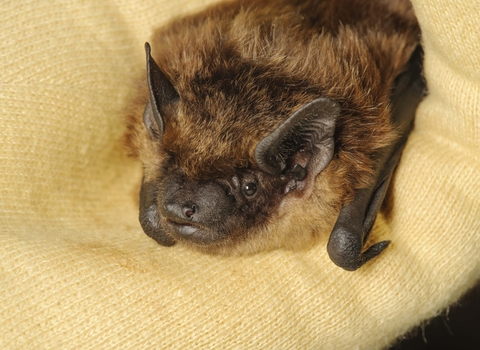
©Terry Whittaker/2020VISION
Serotine
The serotine is one of the first bats to appear at night and can be seen around lamp posts chasing moths, or at treetop height. It likes to roost and hibernate in old buildings in the south of the UK.
Scientific name
Eptesicus serotinusWhen to see
April to OctoberTop facts
Category
Stats
Length: 5.8-8.0cmWingspan: 32-38cm
Weight: 15-35g
Average lifespan: up to 19 years
Protected in the UK under the Wildlife and Countryside Act, 1981. European Protected Species under Annex IV of the European Habitats Directive.
